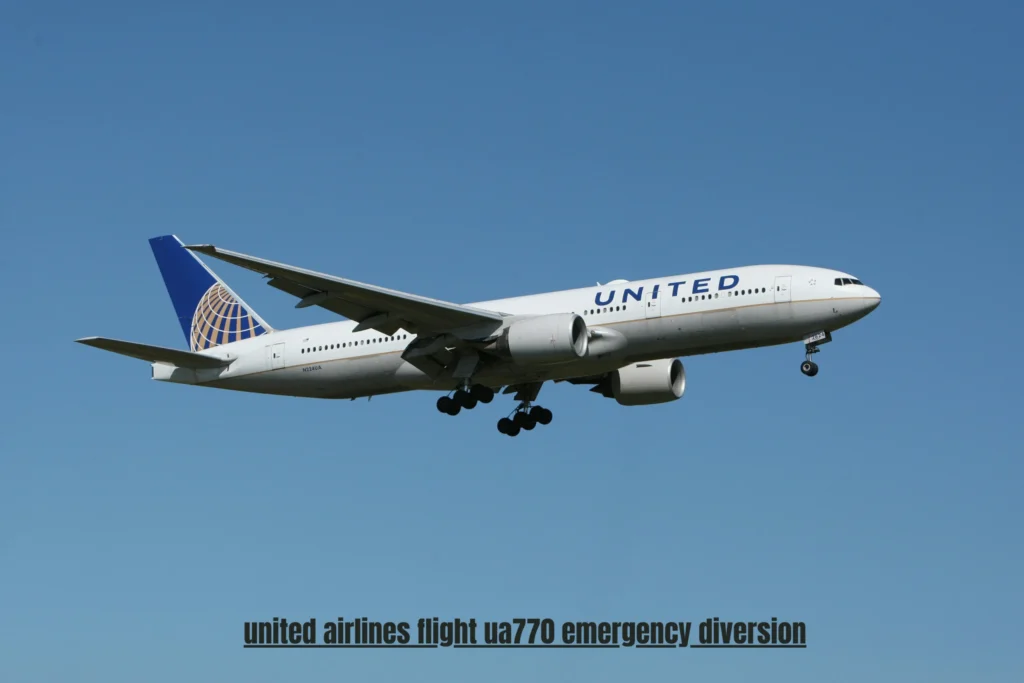In the realm of aviation, where precision and safety are paramount, the United Airlines flight UA770 emergency diversion on May 27, 2025, serves as a stark reminder of how quickly a routine journey can turn into a high-alert situation, yet also highlights the industry’s robust protocols that ensure passenger well-being above all else. Departing from Barcelona-El Prat Airport (BCN) bound for Chicago O’Hare International Airport (ORD), the Boeing 787-9 Dreamliner carrying 257 passengers and 12 crew members encountered a cabin pressurization anomaly mid-flight, prompting a swift declaration of emergency and a diversion to London Heathrow Airport (LHR). This human-written article explores the incident in depth, from the timeline of events to the technical underpinnings, crew responses, and lessons learned, all while optimizing for search terms like “united airlines flight ua770 emergency diversion” to help travelers and aviation enthusiasts find reliable information.
The Incident Unfolded: Timeline of the United Airlines Flight UA770 Emergency Diversion
The United Airlines flight UA770 emergency diversion began innocuously on May 27, 2025, with the aircraft, registration N26902, taking off from Barcelona around 1:30 PM local time, embarking on what should have been an eight-hour transatlantic voyage to Chicago. Approximately 90 minutes into the flight, while cruising at 37,000 feet over European airspace, the flight crew detected an irregularity in the cabin pressurization system—a critical component that maintains breathable air pressure inside the cabin equivalent to lower altitudes for passenger comfort. This anomaly, though not escalating to a full decompression that would deploy oxygen masks, was sufficient to trigger onboard alerts, leading the pilots to squawk 7700, the international transponder code signaling a general emergency to air traffic control (ATC). ATC promptly granted priority clearance, rerouting the flight to the nearest suitable airport, London Heathrow, about 200 nautical miles away.
Technical Details: What Caused the United Airlines Flight UA770 Emergency Diversion
Delving into the technical aspects of the United Airlines flight UA770 emergency diversion reveals the sophistication of the Boeing 787-9’s systems and the proactive measures that averted potential escalation. The Dreamliner’s pressurization relies on electric compressors rather than traditional engine bleed air, a design that enhances efficiency but can be susceptible to sensor or valve malfunctions. In this case, the anomaly likely stemmed from a faulty outflow valve or related servo-motor, causing a gradual increase in cabin altitude from 7,000 to 9,500 feet—still within safe limits but warranting immediate action to prevent further issues over the remote Atlantic. Boeing’s fault-tolerant architecture, with redundant sensors, allowed the crew to manually override and stabilize pressure, avoiding the need for oxygen masks. Post-incident inspections confirmed no structural damage, attributing the issue to a minor component failure common after extensive flight cycles.
Crew and Passenger Response: Handling the United Airlines Flight UA770 Emergency Diversion
The human element shone brightly during the United Airlines flight UA770 emergency diversion, with the crew’s composure playing a pivotal role in maintaining calm aboard the aircraft. The pilots, drawing on extensive training, communicated transparently via the PA system, assuring passengers of the precautionary nature of the diversion without inciting panic. Flight attendants distributed refreshments and monitored for signs of distress, while passengers, a diverse group including families and business travelers, largely remained serene, sharing stories and using in-flight WiFi to update loved ones. Upon landing, United’s ground teams swiftly provided support, including meal vouchers, hotel accommodations, and rebooking options—many passengers were rerouted on subsequent flights the same evening or next day. Personal accounts shared on social media highlighted the professionalism, with one traveler noting the “unexpected layover” turned into a minor adventure rather than an ordeal, thanks to efficient handling that minimized delays and emotional strain.
United Airlines’ Aftermath Strategy: Recovery from the UA770 Emergency Diversion
In the wake of the United Airlines flight UA770 emergency diversion, the airline’s response exemplified operational excellence, quickly mobilizing resources to mitigate impacts on passengers and operations. Within hours, United issued statements confirming the safe landing and emphasizing safety as their top priority, while technicians grounded the aircraft for thorough diagnostics. Compensation included EU261 vouchers up to €600 for eligible passengers, full mileage credits, and personalized assistance via the airline’s app. The incident, occurring during peak summer travel, led to minimal disruptions fleet-wide, with the Dreamliner returning to service after repairs. Broader implications included collaborations with Boeing for enhanced maintenance protocols, ensuring such anomalies are detected even earlier through predictive analytics.
Lessons Learned: Implications of the United Airlines Flight UA770 Emergency Diversion
The United Airlines flight UA770 emergency diversion offers valuable insights into aviation safety evolution, reinforcing the effectiveness of global standards like ETOPS for long-haul flights and the importance of real-time ATC coordination. It prompts discussions on technology’s role in preempting issues, with calls for advanced AI monitoring in aircraft systems. For travelers, it underscores packing essentials like medications and staying informed via airline apps, while reassuring that such events are exceedingly rare and well-managed.
FAQs
What caused the United Airlines flight ua770 emergency diversion?
A cabin pressurization anomaly prompted the safe diversion to London Heathrow.
Were there injuries in the UA770 incident?
No, all 257 passengers and 12 crew landed safely without harm.
How did United Airlines respond to the UA770 diversion?
They provided rebookings, vouchers, hotels, and quick aircraft inspections.
What aircraft was involved in UA770’s emergency?
A Boeing 787-9 Dreamliner, registration N26902, handled the situation flawlessly.
Will the UA770 diversion affect future flights?
United implemented updates; such events are rare and improve safety protocols.
Conclusion
The United Airlines flight UA770 emergency diversion showcases aviation’s safety excellence, with swift crew actions ensuring no harm. It reinforces trust in robust systems. Stay informed and fly confidently.


